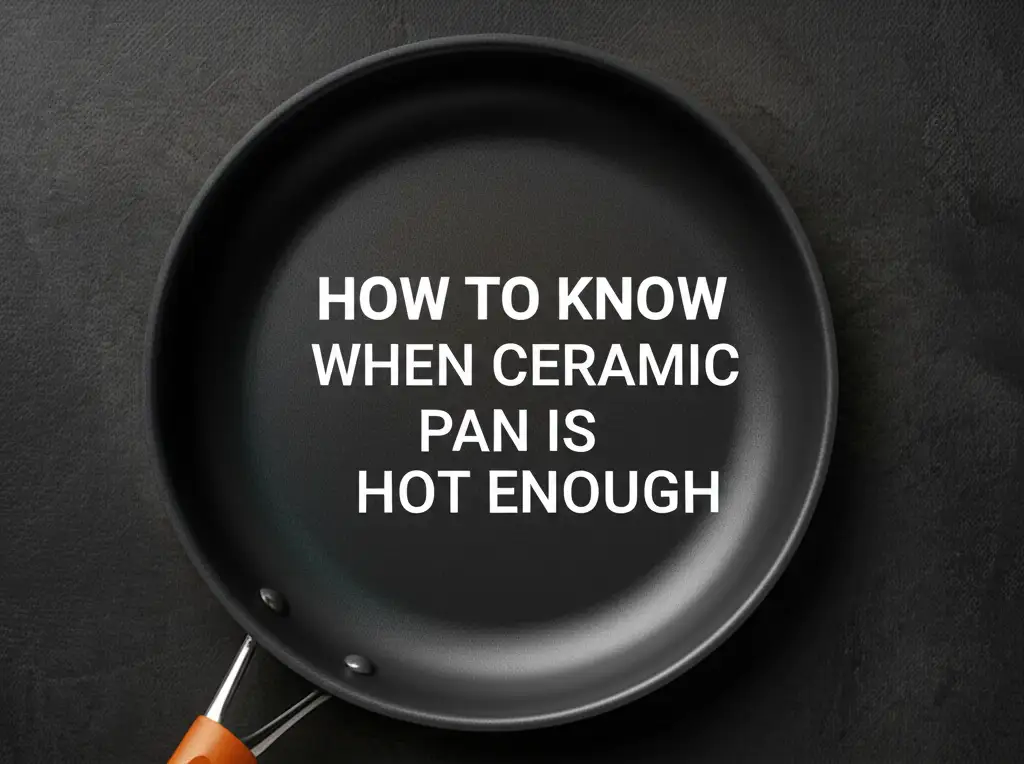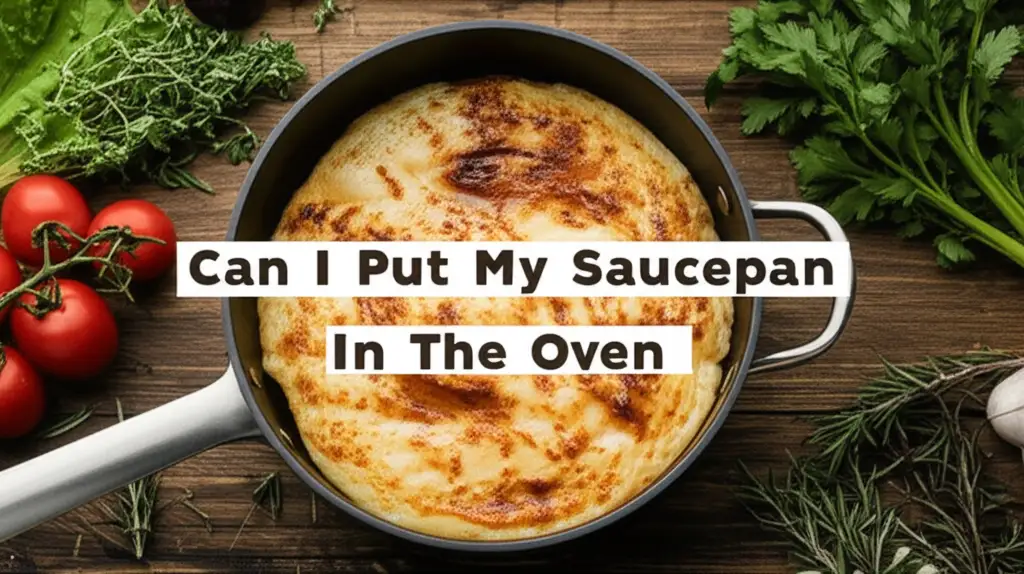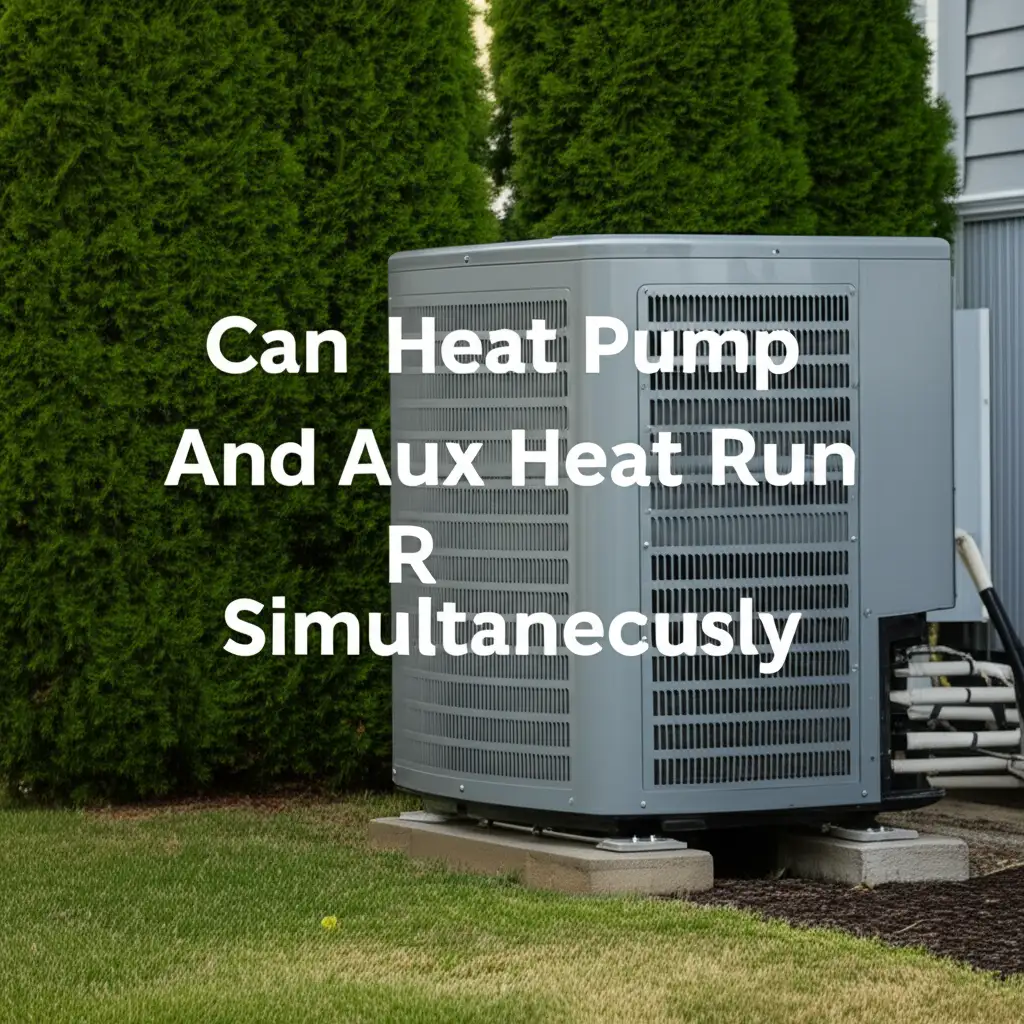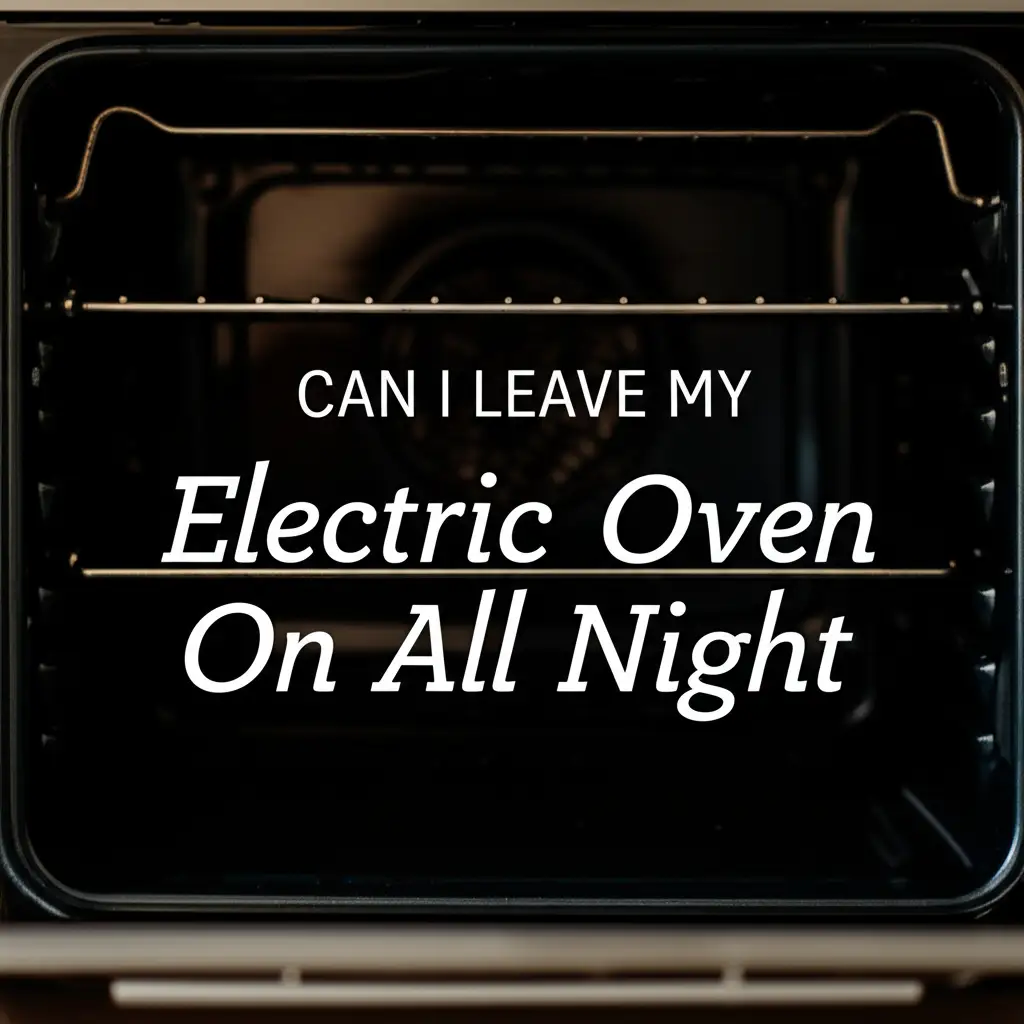· Davia Murnell · Cookware Guide · 19 min read
Can You Put Paella Pan In The Oven
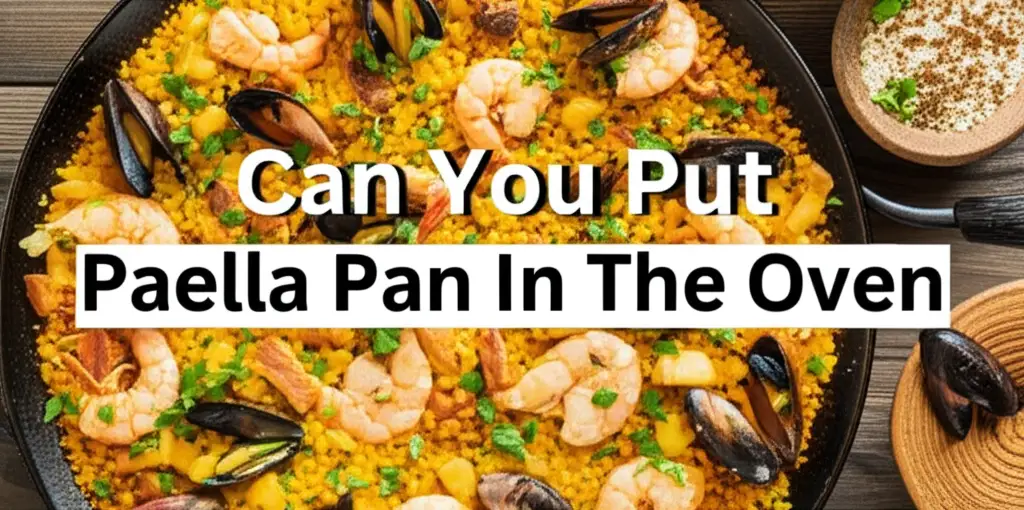
Can You Put Paella Pan In The Oven? A Comprehensive Guide to Oven Safety
Cooking paella is a delightful culinary experience. The dish often starts on a stovetop and finishes in the oven. Many home cooks wonder, “Can I put my paella pan in the oven?” It is a common question. Understanding if your specific paella pan is oven-safe is very important. This knowledge ensures both your safety and the success of your paella.
This guide explores the factors that determine oven safety for paella pans. We will cover different materials and their heat limits. You will learn proper oven usage for various paella pan types. We also discuss essential care and maintenance. My goal is to help you confidently use your paella pan in the oven. Let’s make some amazing paella together.
Takeaway
- Check the Manufacturer’s Guidelines: Always verify your specific paella pan’s oven-safe temperature limit.
- Material Matters: Stainless steel, carbon steel, and cast iron paella pans are generally oven-safe. Aluminum pans often are too, but check for higher temperatures.
- Handle with Care: Ensure handles are oven-safe. Plastic or silicone handles may melt.
- Proper Oven Placement: Place the pan on a sturdy rack to ensure even heat distribution.
- Season and Clean: Regular seasoning and proper cleaning protect your pan and extend its life.
Can You Put a Paella Pan in the Oven? A Direct Answer
Yes, you can often put a paella pan in the oven. Most traditional paella pans, especially those made from carbon steel, stainless steel, or cast iron, are designed for oven use. Always check the manufacturer’s instructions for specific temperature limits. Factors like pan material and handle type determine its oven suitability.
Understanding Paella Pan Materials and Oven Safety
The material of your paella pan directly impacts its oven safety. Different metals handle heat in unique ways. Knowing your pan’s composition helps you avoid damage. It also prevents potential safety hazards. Let’s explore the common materials used for paella pans.
Traditional paella pans are typically made from carbon steel. Carbon steel is a great choice for oven use. It heats evenly and retains heat well. These pans are very durable. They can withstand high oven temperatures.
Carbon Steel Paella Pans: The Traditional Choice
Carbon steel paella pans are a classic option. They are light yet sturdy. Carbon steel pans distribute heat quickly. They also hold heat for a long time. These pans are generally very oven-safe. You can put them in the oven without worry. Most carbon steel pans tolerate temperatures up to 500-600°F (260-315°C).
I have used my carbon steel paella pan in the oven many times. It helps develop the desired crispy bottom, called “socarrat.” Remember to season carbon steel pans. This process creates a natural non-stick surface. Seasoning also protects the pan from rust. Proper care ensures its longevity. Learning how to clean a paella pan is also important for maintenance.
Stainless Steel Paella Pans: Durable and Versatile
Stainless steel paella pans are another excellent choice. They are known for durability and resistance to rust. Unlike carbon steel, stainless steel does not require seasoning. This makes them easier to maintain. Stainless steel pans are generally oven-safe. Many models can go into an oven up to 500°F (260°C) or even higher.
The key with stainless steel is often the handles. Some stainless steel pans have handles with silicone or plastic. These materials may not be oven-safe at high temperatures. Always confirm the handle material’s heat resistance. If the pan is all stainless steel, it is almost certainly fine. You can even check if your stainless steel pan can go in the oven for general guidance.
Cast Iron Paella Pans: Heavy-Duty Heat Retention
Cast iron paella pans are less common but exist. They are very heavy. Cast iron offers exceptional heat retention. This quality is great for achieving a perfectly cooked paella. Like carbon steel, cast iron pans require seasoning. This creates a non-stick surface. Cast iron pans are extremely oven-safe. They can handle very high temperatures.
I often use my cast iron skillet in the oven. The same principles apply to cast iron paella pans. Ensure the entire pan, including handles, is cast iron. Some cast iron pans have enamel coatings. These coatings are also oven-safe. Always check the manufacturer’s specific temperature limits. Cast iron pans are durable kitchen tools.
Aluminum Paella Pans: Lightweight and Conductive
Aluminum paella pans are lightweight. They heat up very quickly. This makes them popular for everyday use. Most aluminum pans are oven-safe. However, their maximum temperature limit might be lower than steel pans. Some aluminum pans can withstand up to 400-450°F (200-230°C). Always check for specific ratings.
Thin aluminum pans might warp at very high temperatures. Thicker, heavier gauge aluminum pans are more robust. They can handle higher heat. If your aluminum pan has non-stick coating, also check its oven safety. Non-stick coatings sometimes have lower heat tolerances. For more general information, you can check if an aluminum pan can go in the oven.
Checking for Oven-Safe Components: Handles and Coatings
When you consider putting a paella pan in the oven, it is not just about the pan’s body. Other components matter too. The handles and any non-stick coatings are very important. These elements often have different heat tolerances than the main pan material. Ignoring them can lead to damaged cookware. It can also create a mess in your oven.
I always check the handles first. Pan handles made of certain materials simply cannot go into a hot oven. This is a crucial step for oven safety. You want to make sure your pan comes out intact. You also want to ensure no hazardous fumes are released.
Handle Materials and Their Oven Safety Limits
Pan handles are made from various materials. Each material has its own oven-safe temperature limit.
- Metal Handles (Stainless Steel, Cast Iron): These handles are generally oven-safe. They can withstand the same temperatures as the pan itself. These are ideal for oven use. You will often find them on high-quality paella pans.
- Silicone Handles: Some paella pans come with silicone sleeves or handles. Silicone is heat-resistant. However, it has a lower melting point than metal. Most silicone is safe up to 400-500°F (200-260°C). Always check the specific silicone product’s rating. If the recipe calls for higher heat, remove the silicone.
- Plastic/Bakelite Handles: Plastic or Bakelite handles are common on stovetop pans. These materials are not oven-safe. They will melt or deform in a hot oven. Never put a pan with plastic handles in the oven. This can create a significant mess. It can also release unpleasant odors.
- Wooden Handles: Wooden handles are also not oven-safe. Wood can char, crack, or even catch fire at high oven temperatures. If your paella pan has wooden handles, it is designed for stovetop use only. Do not use it in the oven.
Always inspect your paella pan’s handles closely. If you are unsure, err on the side of caution. Do not risk damaging your pan or oven.
Non-Stick Coatings and Oven Use
Many modern paella pans feature non-stick coatings. These coatings make cooking and cleaning easier. However, not all non-stick coatings are oven-safe. Their heat resistance varies significantly.
- PTFE-based Coatings (Teflon): Traditional non-stick coatings, like Teflon, typically have a maximum oven-safe temperature around 450-500°F (230-260°C). Heating them above this limit can cause the coating to degrade. It can release fumes. These fumes are not healthy to breathe. Always check the manufacturer’s guidelines for your specific non-stick pan. If you have a non-stick pan, it is important to know if you can put a non-stick pan in the oven.
- Ceramic Coatings: Ceramic non-stick coatings generally have higher heat tolerances. Some are safe up to 500-600°F (260-315°C). They are a good choice if you need a non-stick surface that can go into a hot oven.
- Seasoned Carbon Steel/Cast Iron: As mentioned, carbon steel and cast iron develop a natural non-stick layer through seasoning. This layer is very durable. It is oven-safe at any temperature the pan itself can handle. This is often the most robust “non-stick” option for oven use.
Always refer to the pan’s manual. The manufacturer’s instructions provide the most accurate information. They list the safe temperature limits. Using a pan beyond its recommended limits voids the warranty. It can also create safety risks.
Preparing Your Paella Pan for Oven Use
Once you confirm your paella pan is oven-safe, preparation is key. Proper preparation ensures your paella cooks evenly. It also helps protect your pan. This process is usually simple. It involves preheating and proper placement.
I always make sure my oven is ready before I transfer the paella pan. This prevents temperature shock for the pan. It also ensures consistent cooking. A properly prepared oven setup supports the paella pan’s structure.
Preheating the Oven to the Correct Temperature
Preheating your oven is crucial for successful paella. It ensures the oven cavity reaches the desired temperature. This allows for even cooking from the start. Paella often benefits from a consistent heat environment.
- Set the Temperature: Preheat your oven to the temperature specified in your paella recipe. Common temperatures for finishing paella range from 350°F to 425°F (175°C to 220°C).
- Allow Full Preheating: Wait until the oven’s preheating indicator light turns off. Many ovens take 15-20 minutes to reach the set temperature fully. Some even take longer. Opening the oven door too soon can drop the temperature.
- Avoid Thermal Shock: Do not place a cold paella pan directly into a very hot oven. This can cause thermal shock. Thermal shock can potentially warp metal pans. It can even crack cast iron, though this is rare. Bring the pan to room temperature first.
A properly preheated oven ensures the rice absorbs liquid correctly. It also helps create that sought-after “socarrat.” This is the crispy, caramelized bottom layer of rice.
Proper Placement and Rack Position
Where you place your paella pan in the oven matters. It affects how the heat distributes around the pan. Correct placement ensures even cooking. It also helps achieve the desired texture for your paella.
- Middle Rack for Even Heat: For most paella recipes, placing the pan on the middle oven rack is best. This position allows heat to circulate evenly. It cooks the paella from all sides.
- Lower Rack for Socarrat: If your recipe specifically calls for a crispier bottom (socarrat), you might move the pan to a lower rack. This exposes the bottom of the pan to more direct heat. Monitor it closely to prevent burning.
- Ensure Clearance: Make sure there is enough space around the pan. Air needs to circulate freely. Do not overcrowd the oven if cooking multiple dishes.
- Use a Sturdy Rack: Paella pans, especially larger ones, can be heavy when full. Ensure your oven rack is sturdy enough to support the weight. You do not want it to buckle or tip.
- Safety First: Always use oven mitts or heat-resistant gloves when handling a hot paella pan. The handles will be extremely hot. Place the pan on a heat-proof surface when you remove it from the oven.
Proper oven setup is a small step. It makes a big difference in the final quality of your paella. It also ensures safety in your kitchen.
Cooking Paella in the Oven: Best Practices
Cooking paella in the oven is a common technique. It helps finish the dish and develops crucial textures. The oven provides a stable, even heat. This is ideal for allowing the rice to absorb liquid slowly. It also promotes the formation of the “socarrat.”
I find that finishing paella in the oven simplifies the process. It frees up stovetop space. It also provides more consistent results. This section will guide you through the best practices for oven-finishing your paella.
The Role of Oven Heat in Paella Making
The oven plays a vital role in paella development. After initial cooking on the stovetop, the paella typically goes into the oven. This step is where the magic happens.
- Even Cooking: Oven heat surrounds the paella pan. This ensures all the rice cooks evenly. It prevents raw spots or overly cooked edges.
- Liquid Absorption: The consistent heat allows the rice to absorb the broth slowly. This creates tender, flavorful grains. It avoids the need for constant stirring. Stirring can break rice grains.
- Socarrat Formation: Perhaps the most important role is forming the socarrat. This is the caramelized crust at the bottom of the pan. The dry, high heat of the oven helps create this delicacy. It gives paella its signature texture.
- Resting Period: After cooking, the paella often benefits from a brief rest in the turned-off oven. This allows flavors to meld. It also finishes any remaining liquid absorption.
The oven transforms a stovetop rice dish into an authentic paella. It is a critical step for perfect results.
Monitoring and Timing Your Oven Paella
Monitoring your paella in the oven is important. While the oven provides stable heat, you still need to check progress. Overcooking or undercooking can affect the dish.
- General Timing: Most paellas finish in the oven within 15-25 minutes. This depends on the recipe and pan size. Large pans take longer.
- Visual Cues: Look for the rice to be fully cooked. The liquid should be absorbed. Small craters often form on the surface. These indicate liquid has evaporated from below.
- Checking Socarrat: Listen for a gentle crackling sound from the bottom of the pan. This indicates the socarrat is forming. You can gently lift a corner of the rice with a spoon to check the color. It should be golden brown and crusty, not burnt.
- Resist Stirring: Do not stir the paella once it is in the oven. Stirring prevents socarrat formation. It also releases starch, making the rice gummy.
- Remove and Rest: Once cooked, remove the paella from the oven. Cover it loosely with foil or a clean kitchen towel. Let it rest for 5-10 minutes. This allows flavors to meld and rice to steam further.
I always set a timer, but I also rely on my senses. The aroma, sounds, and appearance of the paella tell me when it is ready. This approach ensures a perfectly finished dish every time.
Essential Care and Maintenance for Oven-Safe Paella Pans
Proper care and maintenance extend the life of your paella pan. This is especially true for pans used in the oven. High heat can be tough on cookware. Consistent care keeps your pan in prime condition.
I have found that a little effort after each use makes a big difference. It prevents rust and maintains non-stick properties. A well-cared-for paella pan will serve you for many years. It is an investment worth protecting.
Cleaning Paella Pans After Oven Use
Cleaning your paella pan after oven use is crucial. Dried-on food can be stubborn. Proper cleaning prevents food from sticking next time. It also protects the pan’s surface.
- Cool Down First: Always let the pan cool completely before cleaning. Thermal shock from hot pan to cold water can warp or damage the pan. This is especially true for carbon steel and cast iron.
- Soak if Needed: For stuck-on food, fill the pan with warm water. Let it soak for 10-15 minutes. This softens food residues.
- Avoid Harsh Scourers: Use a soft sponge or nylon brush. Avoid abrasive steel wool or harsh scrubbers. These can damage seasoned surfaces or non-stick coatings.
- Mild Soap Only: For carbon steel and cast iron, use minimal or no soap. Soap can strip the seasoning. For stainless steel, a mild dish soap is fine.
- Thorough Drying: This is the most critical step for carbon steel and cast iron. Dry the pan immediately and thoroughly. Use a clean towel. Residual moisture causes rust. You can even put the dry pan on low heat on the stove for a minute to evaporate all moisture.
For detailed instructions, refer to guides on how to clean a paella pan. Proper cleaning prevents rust and preserves the pan’s finish.
Seasoning Carbon Steel and Cast Iron Pans
Seasoning is vital for carbon steel and cast iron paella pans. It creates a natural, non-stick surface. It also protects the pan from rust. Oven use can sometimes affect seasoning. Regular re-seasoning is good practice.
- Apply Thin Oil Layer: After cleaning and drying, apply a very thin layer of high smoke point cooking oil. Examples include grapeseed, flaxseed, or vegetable oil. Wipe off any excess oil. The pan should look almost dry.
- Bake in Oven: Place the pan in a preheated oven. Typically, bake at 350-400°F (175-200°C) for one hour. This bakes the oil onto the pan.
- Cool Down: Turn off the oven. Let the pan cool completely inside the oven. This helps set the seasoning.
- Repeat as Needed: Repeat this process several times for an initial seasoning. Re-season whenever food starts sticking. Or if the pan looks dull. This maintains its non-stick properties.
Proper seasoning makes cooking and cleaning easier. It also protects your pan for years of use. It is a simple step with long-term benefits.
Storing Your Paella Pan Safely
Correct storage keeps your paella pan in good condition. It prevents scratches and rust. Proper storage also saves space in your kitchen.
- Dry Completely: Ensure the pan is completely dry before storing. This prevents rust, especially for carbon steel and cast iron.
- Protect Surfaces: If stacking pans, place paper towels or thin cloths between them. This prevents scratches. Scratches can damage non-stick coatings or seasoning.
- Hang if Possible: Many paella pans have loops or handles suitable for hanging. Hanging prevents scratches and saves cabinet space.
- Ventilated Area: Store pans in a dry, well-ventilated area. Avoid damp cabinets. Moisture promotes rust.
Following these care and maintenance steps ensures your paella pan remains a valuable cooking tool. It will be ready for your next culinary adventure, whether on the stovetop or in the oven.
Exploring Paella Pan Versatility Beyond the Oven
While the oven is a common destination for paella pans, their versatility extends much further. These pans are designed for flexible cooking. You can use them on various heat sources. Understanding this versatility helps you maximize your paella pan’s utility.
I often start my paella on the stove and finish it in the oven. But sometimes, I cook it entirely on the stovetop. This adaptability makes paella pans truly useful. They are not just for the oven.
Using Paella Pans on Different Stovetops
Paella pans are built for stovetop cooking first. They work well on various stove types. Each type requires slight adjustments.
- Gas Stoves: Gas stoves are ideal for paella pans. The open flame distributes heat directly and evenly. This helps in developing the socarrat. Adjusting heat is quick and precise. Many paella enthusiasts prefer gas for this reason.
- Electric Coil Stoves: Paella pans can be used on electric coil stoves. Heat distribution might be less even than gas. Rotate the pan occasionally to ensure even cooking. Larger pans might overhang the coils. This creates cooler spots. You can find more tips on using a paella pan on an electric stove.
- Glass/Ceramic Stovetops: These smooth-top stoves can also accommodate paella pans. Ensure the pan’s bottom is flat. Avoid dragging the pan. This can scratch the glass surface. Heat transfer is generally good.
- Induction Hobs: Not all paella pans work on induction hobs. Induction requires magnetic materials. Carbon steel, cast iron, and some stainless steel pans are induction compatible. Aluminum pans are not. Check for an induction-compatible symbol on the pan. For detailed information, see if you can use a paella pan on an induction hob.
Understanding your stove type helps you cook better paella. It also prevents damage to your pan or stovetop.
Outdoor Cooking and Grilling with Paella Pans
Paella pans are excellent for outdoor cooking. They are often used over open flames. This is how traditional paella is made in Spain.
- Paella Burners: Dedicated paella burners are common. These are gas burners designed to fit the pan’s large diameter. They provide even heat across the entire bottom. This is great for large gatherings.
- Grills: You can use a paella pan on a large outdoor grill. Place it directly on the grill grates. Ensure the grill size matches the pan size. This method imparts a smoky flavor. Monitor heat carefully to prevent scorching.
- Open Fire: Adventurous cooks might use a paella pan over an open wood fire. This adds a unique smoky depth to the paella. It requires skill to manage the flame and heat. Always ensure safety precautions are in place.
Outdoor cooking with a paella pan is a rewarding experience. It brings an authentic touch to your paella. It also creates a wonderful atmosphere for entertaining. The pan’s flat, wide design is perfect for this.
Troubleshooting Common Paella Pan Oven Issues
Even with an oven-safe paella pan, issues can arise. Knowing how to troubleshoot common problems saves your dish. It also prevents frustration. Most issues are easy to fix with the right knowledge.
I have faced my share of paella pan challenges. Learning from these experiences has made me a better cook. This section shares practical solutions for common oven-related problems.
My Paella Pan Handles Melted in the Oven
This is a common issue if you do not check handle materials. Plastic or non-oven-safe silicone handles will melt.
- Immediate Action: Turn off the oven. Let the oven cool. Once cool, carefully remove the pan.
- Assessment: Check the extent of the damage. If plastic dripped, it might harden onto oven surfaces.
- Cleaning: Scrape off cooled plastic carefully. Use a plastic scraper to avoid scratching. For stubborn residue, specialized oven cleaners might be needed. Always test on a small area first. You can also explore general tips for how to clean the bottom of your oven if plastic has dripped.
- Prevention: Always confirm handles are oven-safe before putting the pan in the oven. If unsure, use a pan with all-metal handles.
This issue is preventable with a quick check. Always prioritize safety over convenience.
My Paella Pan Warped in the Oven
Warping usually happens due to extreme temperature changes or thin material.
- Cause: Thin aluminum pans are more prone to warping at high temperatures. Rapid cooling (thermal shock) can also cause warping in any metal.
- Correction: Minor warping might correct itself upon cooling. Severe warping is often permanent.
- Prevention: Avoid preheating an empty pan in a very hot oven. Do not run cold water over a hot pan. Use appropriate temperatures for your pan’s material. Thicker gauge pans are less likely to warp.
Warping impacts heat distribution. A warped pan will not cook evenly. This affects your paella’s quality.
Food Sticking After Oven Use
Food sticking after oven use often indicates an issue with seasoning or cleaning.
- Carbon Steel/Cast Iron:
- Cause: Insufficient seasoning or stripped seasoning.
- Solution: Re-season the pan thoroughly. Ensure you use a very thin layer of oil. Bake at the correct temperature. Avoid harsh soaps. For more help, revisit how to clean a paella pan for correct steps.
- Non-Stick Pans:
- Cause: Non-stick coating degradation from high heat, scratches, or age.
- Solution: If the coating is degrading, the pan might need replacement. Avoid using metal utensils. Use wooden or silicone tools. Ensure you did not exceed the pan’s maximum oven-safe temperature. You can


